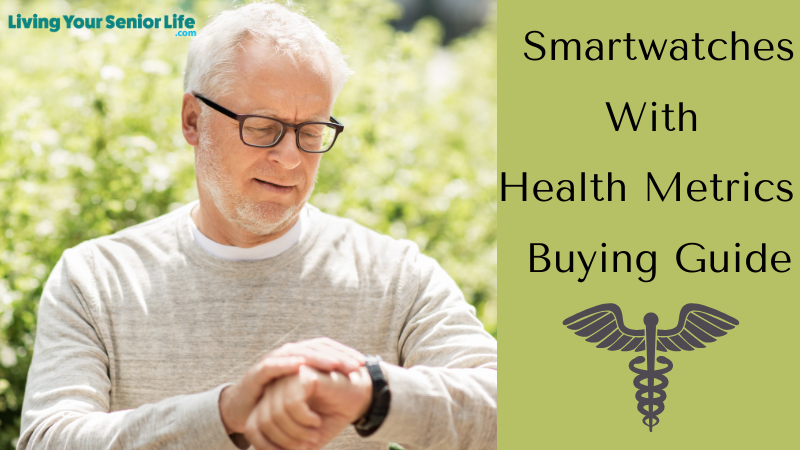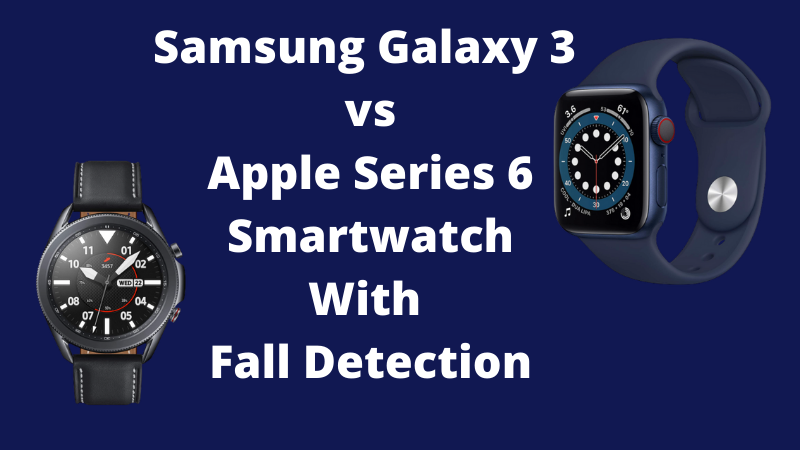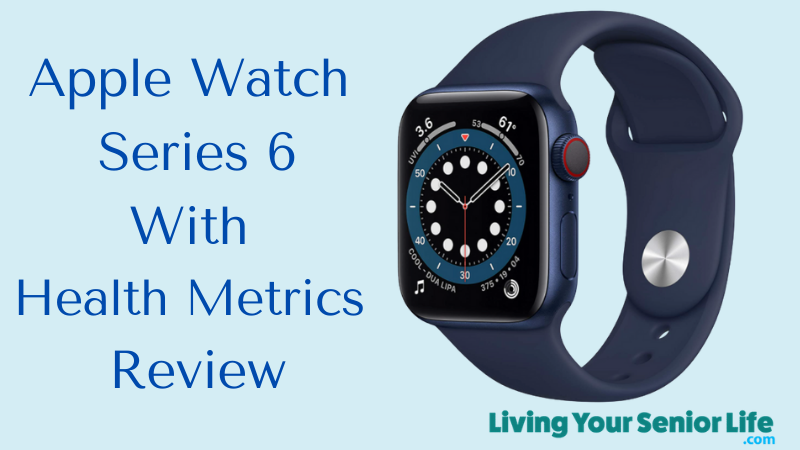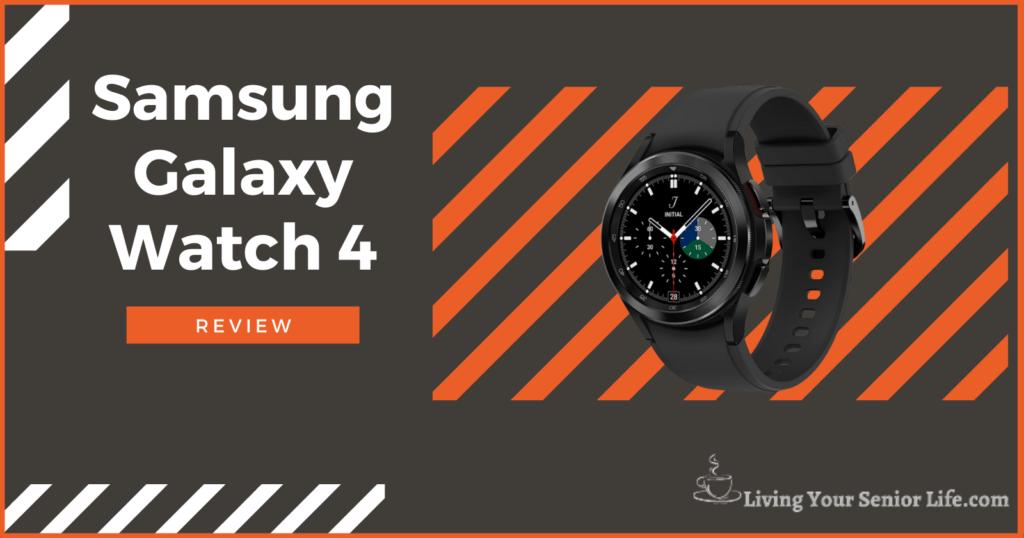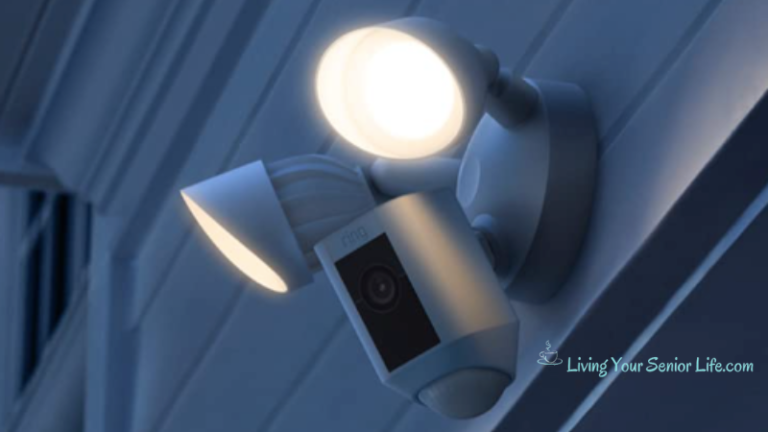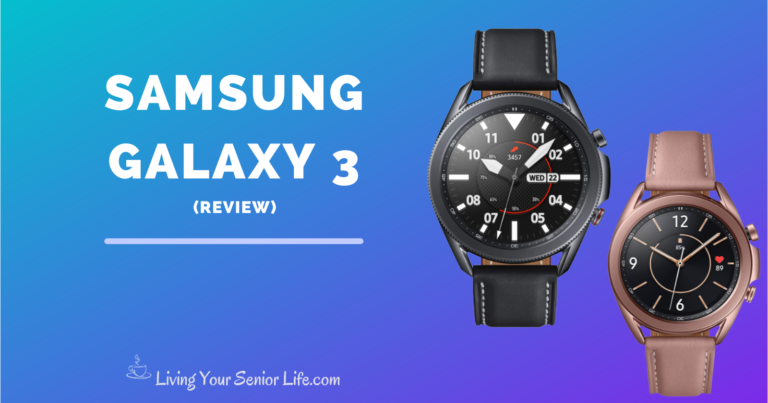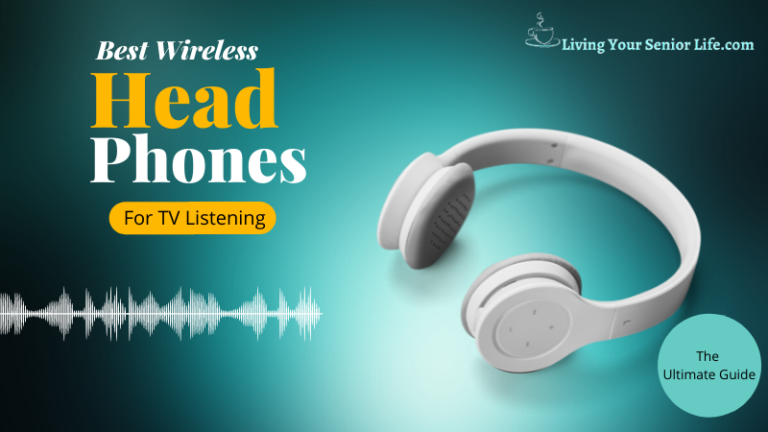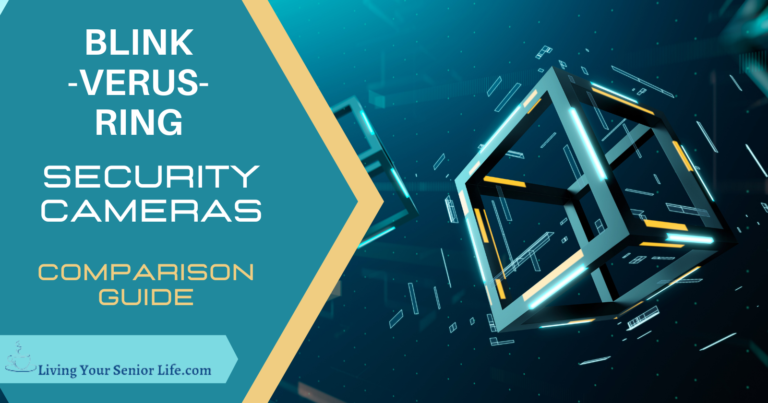LivingYourSeniorLife is supported by its audience. When you purchase through links on our site, we may earn a small affiliate commission at no cost to you. Learn more.
By reading Smartwatches With Health Metrics – Learn What They Are & Do, you’ll explore and discover what health tracking features and metrics are available with smartwatches.
Have you recently seen what’s available on smartwatches? It’s incredible how far they’ve come – unlike older devices, fitness trackers that were not much more than a step counter now have the ability to monitor many health metrics- something that wasn’t possible just a few years ago.
Perhaps you’re looking to purchase a smartwatch. Maybe you’re wondering or confused about what you should look for. This article looks at some of the top-rated smartwatches. You’ll be able to gain knowledge of which smartwatch best fits your wants and needs, whether you’re a fitness buff looking for fitness tracking or wanting more in the way of measuring health metrics.
Before we look at the available health features, let’s take a few minutes to review some smartwatch information.
What Is A Smartwatch?
A smartwatch is a mobile device that you wear on your wrist, like a watch. Smartwatch features are similar to the features you find on a smartphone.
It keeps time, and has apps; some have text messaging options, phone use, and the ability to listen to music some are fitness trackers, much as you have on a smartphone.
In addition to that, some also monitor activities and health vitals. Some of these health vitals include sleep quality, sleep tracking, the ability to measure blood pressure, measuring blood oxygen saturation levels, menstrual cycles, skin temperature variations, heart rate variability, and much more.,
Smartwatches, like smartphones, have a touchscreen that allows the user to tap or swipe to perform specific actions.
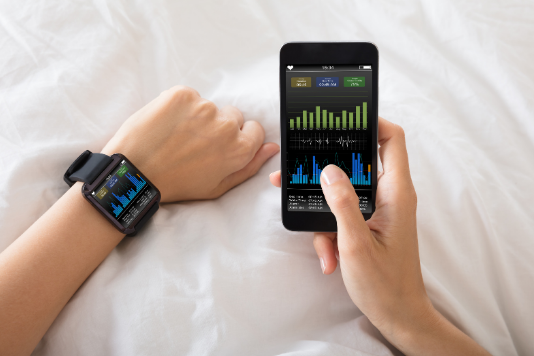
How Do Smartwatches Work?
There are some smartwatches that stand alone, meaning a smartphone isn’t required. However, most require a smartphone.
For this reason, it’s important to note that not all smartwatches work with all smartphones. Many will need smartphone compatibility. For instance, some smartwatches have an operating system that only supports iPhones (Apple); others support Android, while others support both Android and IOS.
Both Apple and Android phone owners will avoid disappointment by making sure if the smartwatch they are interested in needs a smartphone-compatible operating system (os), and if so, be sure to have the right phone.
How Long Do Smartwatches Last?
The lifespan of a smartwatch is generally 2 to 3 years. Some smartwatches won’t even last that long. Many times it’s the new technology that makes a smartwatch outdated. With new technology comes upgraded features, which can cause a smartwatch to become obsolete.
How Much Does a Smartwatch Cost?
The price of smartwatches varies greatly. If you find older devices that have the features you want, you can probably get one for about $100. Other smartwatches can cost upwards of $1,600 and even more. However, depending on the features, the average cost is somewhere between $200 and $500. The average is in the $200 to $500 range, depending on features and accessories.
The Mechanics
How Long Does A Smartwatch Battery Charge Last?
Battery life is another smartwatch aspect you’ll want to keep in mind. Most models offer between 1 day and five days of battery life.
How is this important in your decision-making process? Let’s say the smartwatch has a battery charge lasting 18 hours. Not a problem unless you’re planning to monitor your sleep cycle – your smartwatch could stop working in the middle of the night.
So just keep in mind if you do have a lower battery charge life that, you will need to recharge it during the day to keep it monitoring throughout the night. Not necessarily a deal-breaker but something to keep in mind.
By the way, do you know that the more features that are used on a smartwatch, the faster your battery can drain?
Battery Charging Time
Also, look to see the battery charging time. How quickly does it charge? Faster charging time might be something you consider a needed feature.
Some watches require 4 hours to fully charge while others can be charged in 30 minutes.
Cellular Connectivity
This type of connectivity allows your smartwatch to link up to your phone carrier’s data plan without your phone connection. For instance, if you want to go outside for a walk and listen to music or send a text message; you can even without your phone nearby.
Smartwatches with this type of connectivity come with higher price tags than those without.
Also, there will be an added expense with your phone provider. So before buying a smartwatch that comes with cellular connectivity, be sure to contact your phone provider and find out how much extra it would cost to add this type of connectivity to your plan.
Apple Watches: Includes Apple Pay
GPS (Global Positioning System)
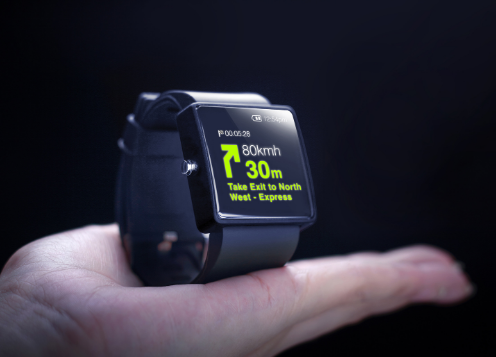
GPS is a global navigation satellite system that provides location, velocity, and time synchronization – basically, where you are on this wonderful planet called Earth.
There are two types of GPS tracking – connected and built-in.
GPS connected means you will need to piggyback off your smartphone’s connection and have the phone on you for the GPS to work on your watch.
With built-in GPS, the censors are built inside the device (meaning you won’t need your phone for GPS to operate).
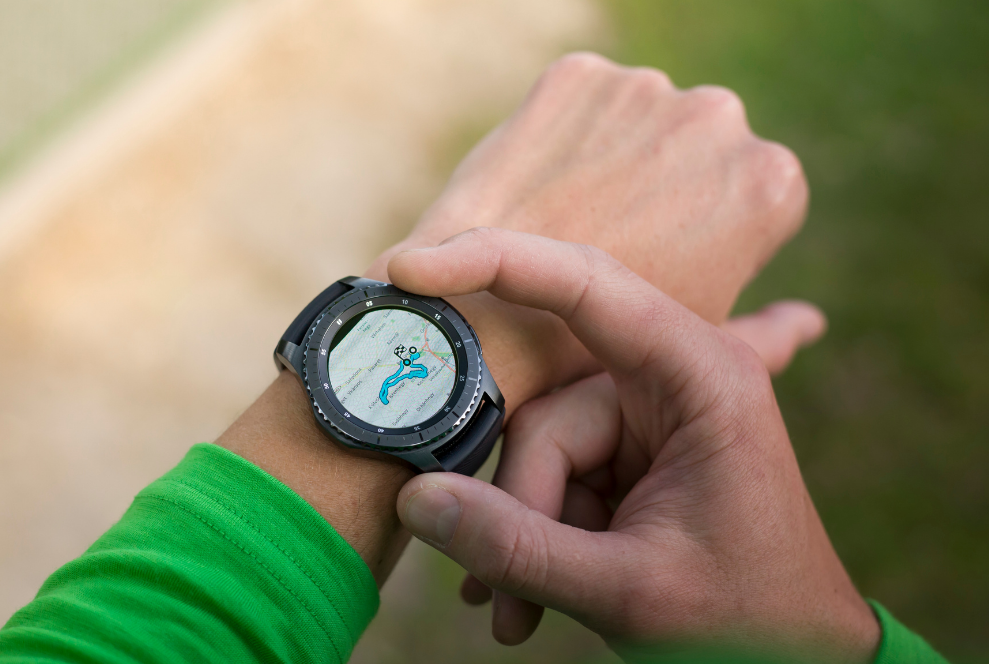
The GPS mode is a personal choice, what you want to use your smartwatch for, and to affect price tags. If you don’t mind carrying your phone with you or prefer to for safety reasons, then connected GPS might be the way to go.
However, if you want to have the freedom to go out without your phone, you want to consider built-in GPS.
The extra cost may not be worth it for some people, but for others, the convenience of not having to have your phone nearby is a benefit they find worth the higher price tags.
Health
Now that we’ve taken a look at some of the technical aspects of a smartwatch, let’s move on to what this article is intended for. Let’s take a look at some of the health metric options available on smartwatches.
Remember, no smartwatch can diagnose any medical issues you may have. Every smartwatch I’ve seen and reviewed gives a medical disclaimer. Smartwatches are not for making health decisions; you always want to seek your doctor’s advice.
Electrocardiogram (ECG) App
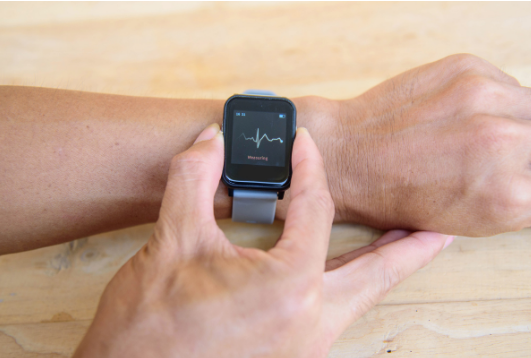
Newer to the scene are smartwatches that monitor your heart and may detect overlooked heart abnormalities that could lead to a heart attack.
How does the electrocardiogram app work? Unlike a medical ECG, where you have electrodes placed on specific areas of your body, the ECG on smartphones has you place your finger on the device. It then reads the data and may detect if you have an abnormal heartbeat.
Some smartwatches with ECG have been FDA-cleared to detect atrial fibrillation.
So what is atrial fibrillation? It is a heart condition that can cause irregular and abnormally fast heartbeat. It’s common and potentially deadly. It’s also intermittent, which makes it difficult to detect. At the time of the writing of this article two companies that have been FDA cleared for this type of detection are Apple and Samsung. Other companies are still pending FDA approval.
What makes the ECG app a plus is that you can have the watch on you, and the ECG can be activated if you are experiencing symptoms or feeling something just isn’t right. The watch then records your reading, and you can take it to the doctor for further insight.
Personal ECG devices are proven to save lives, but on the flip side, they can still miss major problems or cause someone to believe they have issues with their heart when they don’t.
Smartwatches can’t be relied upon to detect all heart rhythm abnormalities – or worsening heart problems. It also can’t be relied upon to detect the electrical changes that take place during a heart attack or abnormal heart structure.
And again, remember these devices are not made to give any type of medical diagnosis on cardiovascular health. You do want to see your doctor for any health issues and questions.

Heart Rate Monitoring
Most smartwatches use what is called PPG or photoplethysmography to calculate heart rate. Heart rate is detected when a small green light is projected onto the skin. Whatever light isn’t absorbed is reflected back to the sensor, which in turn then calculates heart rate.
Some watches will monitor heart rate zones, and you’ll be able to tell if you are in an exercise zone that matches your goals and also act as a heart rate monitor at the same time.
Blood Pressure Monitoring
Monitoring blood pressure is pretty new to the smartwatch world. What a significant advancement this has been for many people. Being able to track blood pressure outside of the doctor’s office is so convenient.
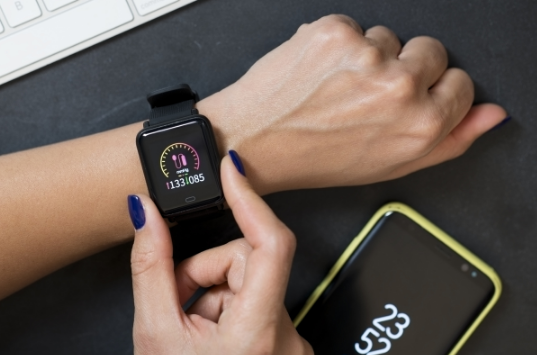
Many people, including about ⅓ of all Americans, suffer from hypertension (high blood pressure). Hypertension has been linked with heart disease, strokes, kidney disease, and other disorders when it isn’t adequately managed.
Some studies show that blood pressure taken with a smartwatch is not accurate. As more smartwatches become FDA-approved, I’m sure this will change.
Temperature
Temperature readings allow your body temperature to be detected by an algorithm and then analyzed to give you the output.
If you have a condition where monitoring your temperature is essential, if you want to keep an eye on your temperature while sick, take medication, or even track a rise in temperature, then this would be a feature to look for.
Blood Oxygen Levels
Smartwatches use what is known as an SP02 (blood oxygen saturation) sensor to measure your oxygen level. The sensor uses light sensors to detect oxygen levels. It then delivers the data to the device’s screen, which will tell you the percentage of oxygen in the blood.
Oxygen levels can be taken two ways, depending on the watch. One is to check manually by placing your finger on the device, and the other is for the smartwatch to periodically check on its own, for instance, during sleep.
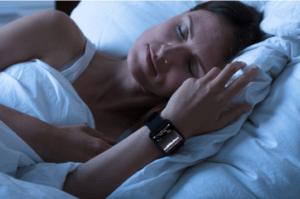
People with breathing problems during sleep, be it from apnea or COPD, often have low oxygen levels. As a result of not breathing for 30 seconds or more during sleep blood, oxygen levels can drop to 80% or less.
If left untreated or undetected, it’s a disorder that could increase the risk of high blood pressure and obesity and can even cause a heart attack.
Many people are unaware they have sleep apnea, but monitoring SP02 levels during sleep can signal something going on that needs to be checked out.
Respiratory Rate
Respiratory rate is also known as your breathing rate. This is the number of breaths you take per minute.
Each breath, or respiration, has two phases, inhalation and exhalation. Oxygen is brought into your lungs during inhalation and transported throughout your body in the bloodstream. Carbon dioxide is then eliminated and dispersed from your lungs during exhalation.
If you’re a rapid breather monitoring your respiratory rate can be useful and give you knowledge when you need to breathe deeply. It can also be used in monitoring your sleep quality and sleep cycles.
Safety
Emergency SOS
In case of a medical emergency or other emergencies, with an emergency SOS feature, you can send your current location to emergency responders or a particular contact. A great feature if you find yourself alone outside or even in your home and need assistance.

Apple Watches: Includes Apple Pay
What is Fall Detection on a SmartWatch?
Fall detection activates if you suffer a hard fall while wearing the smartwatch. It can help you connect to emergency services or your emergency contact. If movement isn’t detected after 1 minute, some watches will call emergency services for you and let your emergency contact know that they did.
Other Considerations When Buying A SmartWatch
There are a few other features to consider when considering a smartwatch.
Budget
You can find smartwatches that monitor health metrics in a wide range of prices. Always be mindful of what you can and cannot afford.
I recommend looking at the features available and making a list of the most important ones to you. As you’re looking at purchasing one, if the price is too high, look at what features you can do without seeing if that will lower the cost.
For instance, maybe when it comes to fitness trackers, a heart rate monitor is more important to you than one that can get phone calls. Maybe while looking at older devices, you can find everything you need and want.
Design
Compared to days gone by nowadays, you can feel comfortable wearing your smartwatch as your everyday watch.
Most smartwatches come with a variety of watch faces that you can change with a tap. A ceramic case or stainless steel are the more expensive options. Bands can be made of, but are not limited to, silicone, plastic, leather, polyurethane rubber, nylon, and mesh.
When looking at purchasing your smartwatch, consider if it’s one you can see wearing everywhere. With a variety of faces and band types available, you’ll surely find one that you like.
Face Size
The size of the watch face is something you want to take into consideration. There are a variety of sizes, 38, 40, 42 or 44 mm, being the more common. The larger face number usually corresponds with a larger screen.
Some women prefer the smaller watch face, and the larger display size is perfect for men. However, this again is an individual choice, and women also enjoy the larger face size as it’s easier to see.
User Friendly
Having a smartwatch can be fun, and educational, giving you the information you want, be it activity tracking, health monitoring, or just plain convenience. However, having one that is user-friendly can make all the difference in the world. It can be the make or break in the deal for actually using it.
When researching and shopping for your smartwatch, look at how user-friendly it is. If you’re tech-savvy, this might not be a contributing factor in your purchase. If you’re like many of us, it should be. No sense in spending money on a smartwatch if you cannot understand or learn how to use it.
Video: How Accurate Are Smartwatches?
Related Articles
You May Also Be Interested In Reading: Samsung Galaxy Watch 3 – Review
Final Thoughts
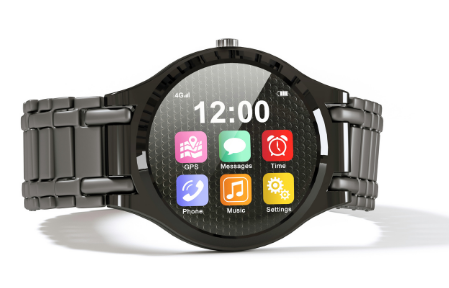
Since this article’s aim is to give the reader a look at the health metrics that accompany some smartwatches, I have focused on that. But don’t think that a smartwatch that monitors health metrics is all it can do.

Though a few do that and nothing else, many have other features as well. These features include activity tracking, texting, streaming and music storage, phone use, contacts, time, calendar, games, pedometers, fitness trackers, calories burned counters, pay at checkout, and many more.
Smartwatch design is rapidly changing, so hold out until you find something you actually want to wear. Be it a ceramic case or the standard, choose the one you’re most attracted to but do stay within your budget.
The coming year is sure to bring new iterations of pretty much every watch on this list, not to mention plenty of completely new ones. Maybe more will become FDA approved in monitoring certain health metrics. However, remember, with older devices, you usually get a better price.
Conclusion
With all products, features can change, so before purchasing, be sure the features that attracted you to the product are still the same.
When looking for your perfect smartwatch, whether you’re looking for the latest smartwatch out there or an older model, take the features discussed in Smartwatches With Health Metrics – Learn What They Are & Do into consideration. With this knowledge, you will make a more informed decision regarding your top-pick smartwatch.
Do you have experience wearing or purchasing a smartwatch and would like to share? Please comment below.
